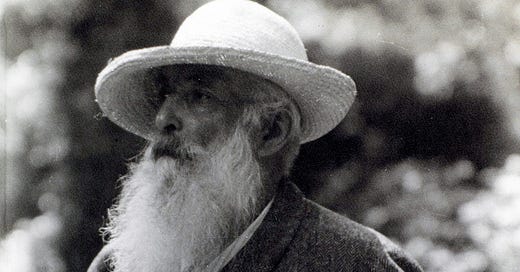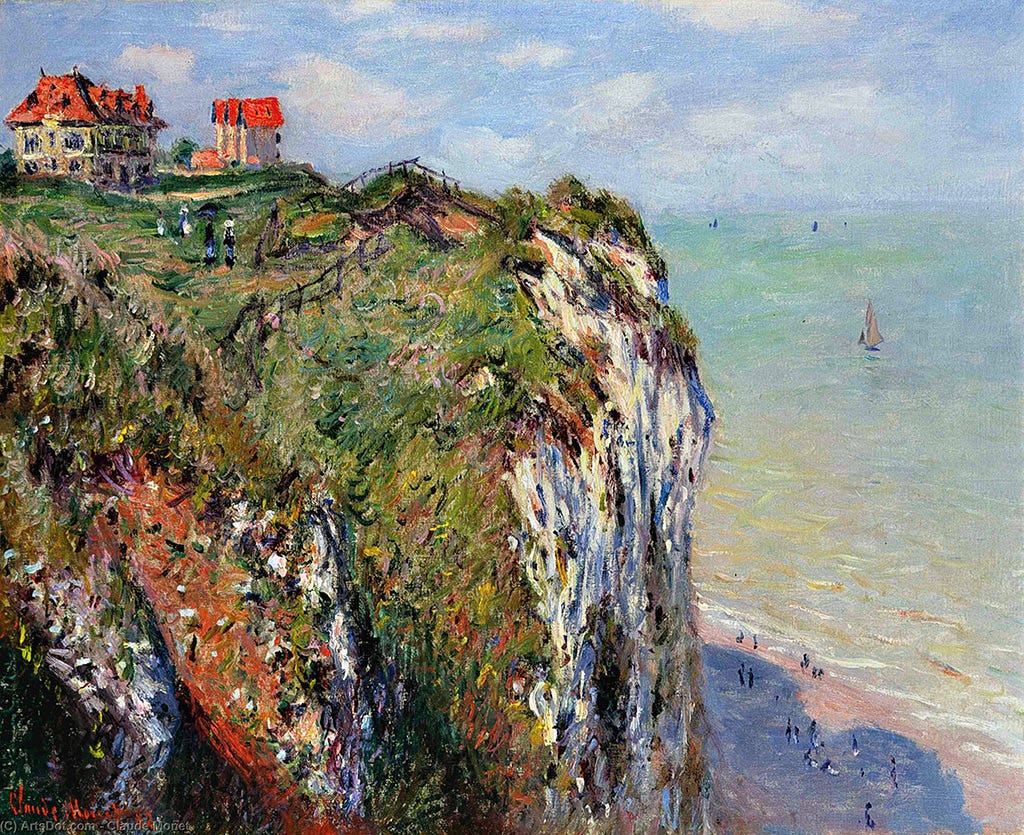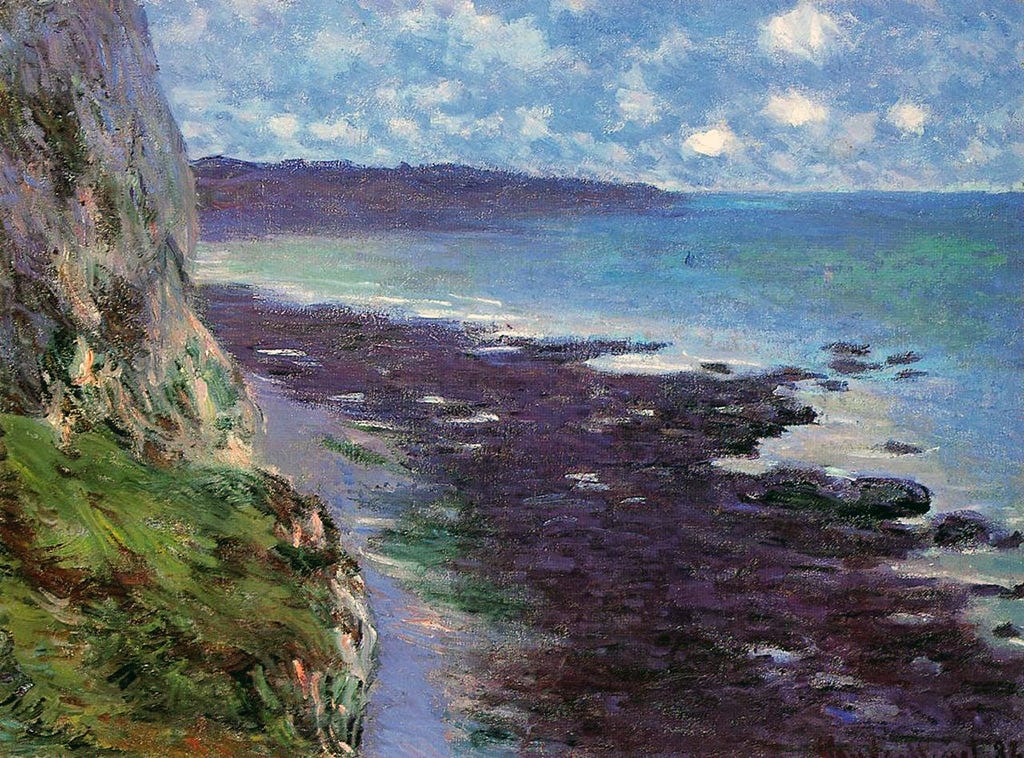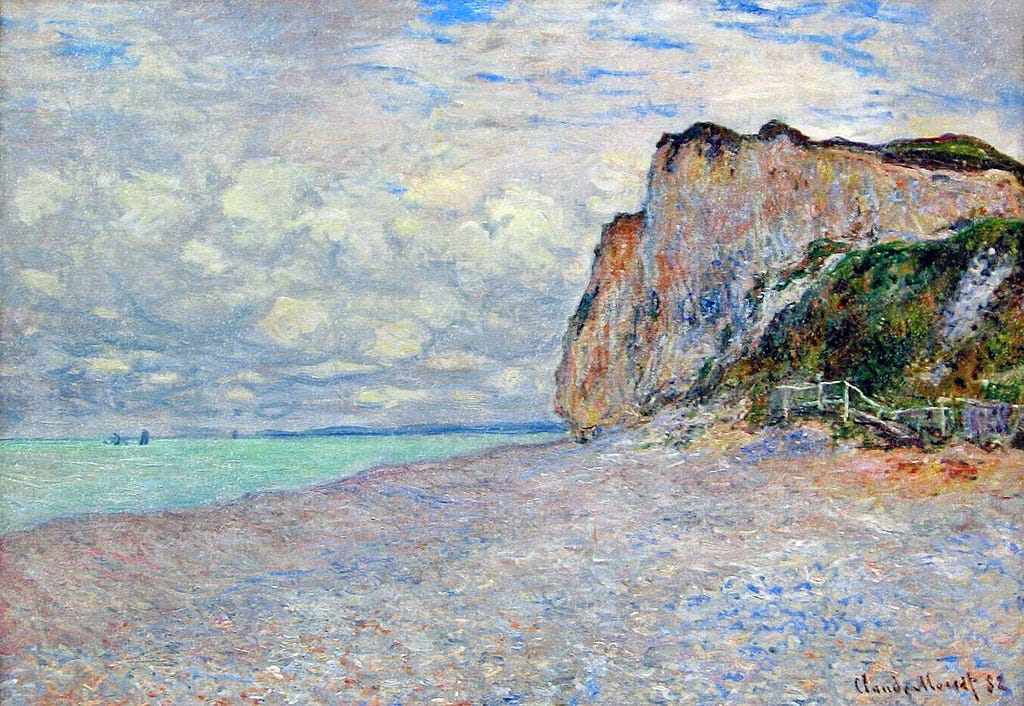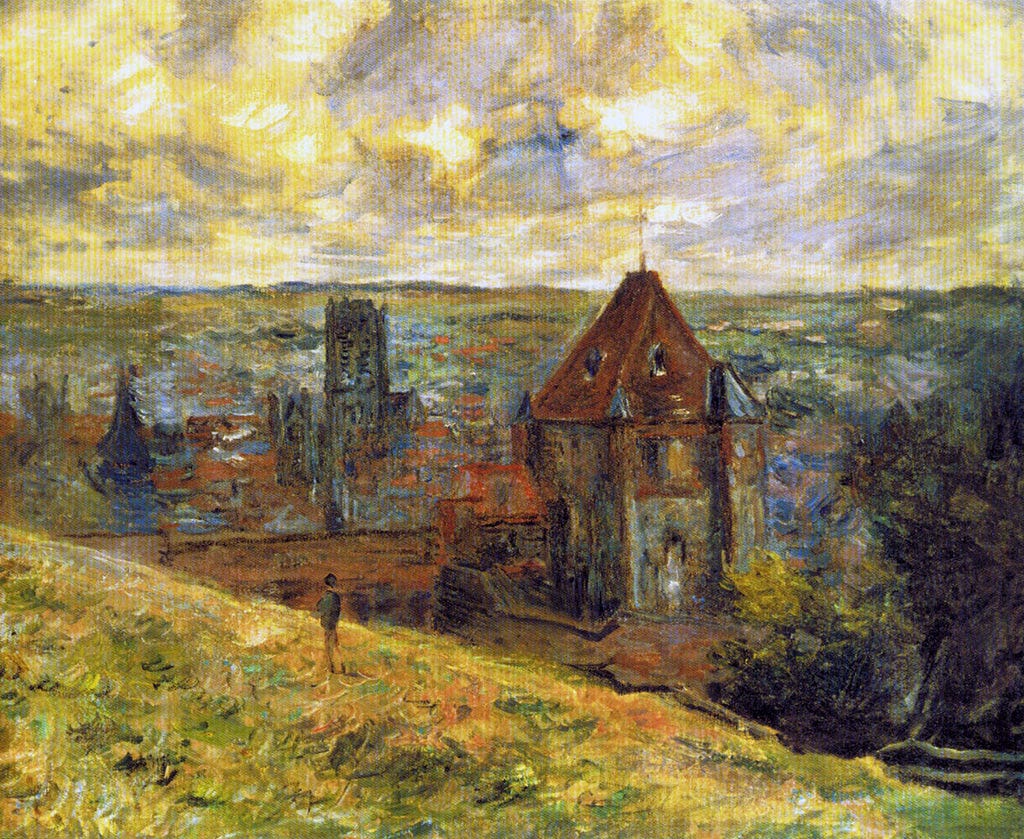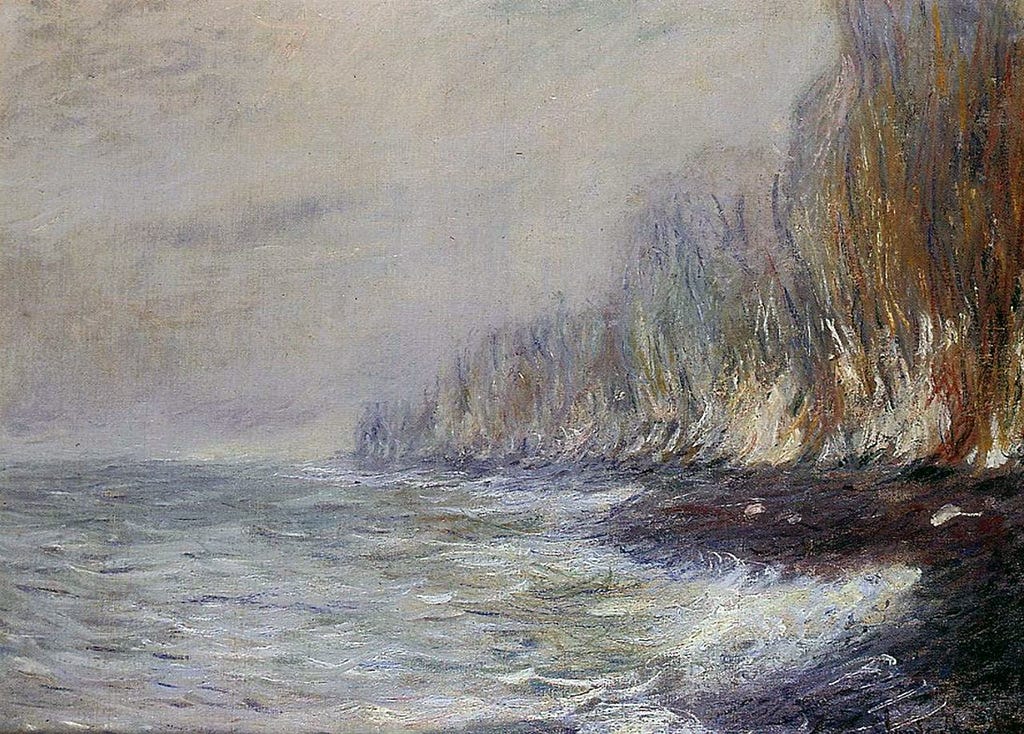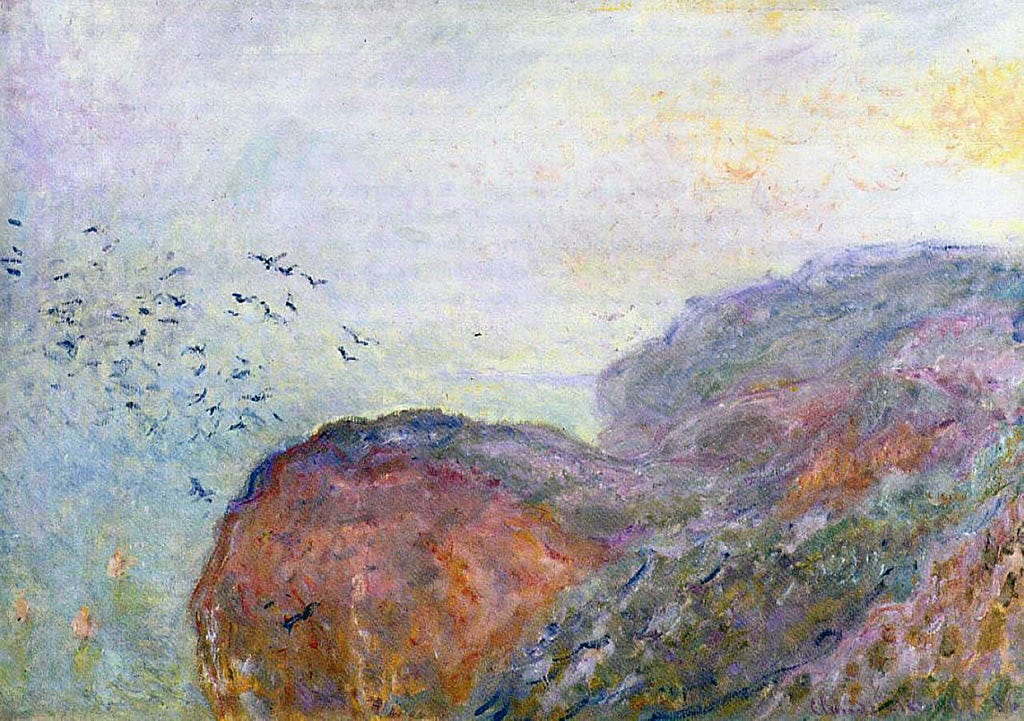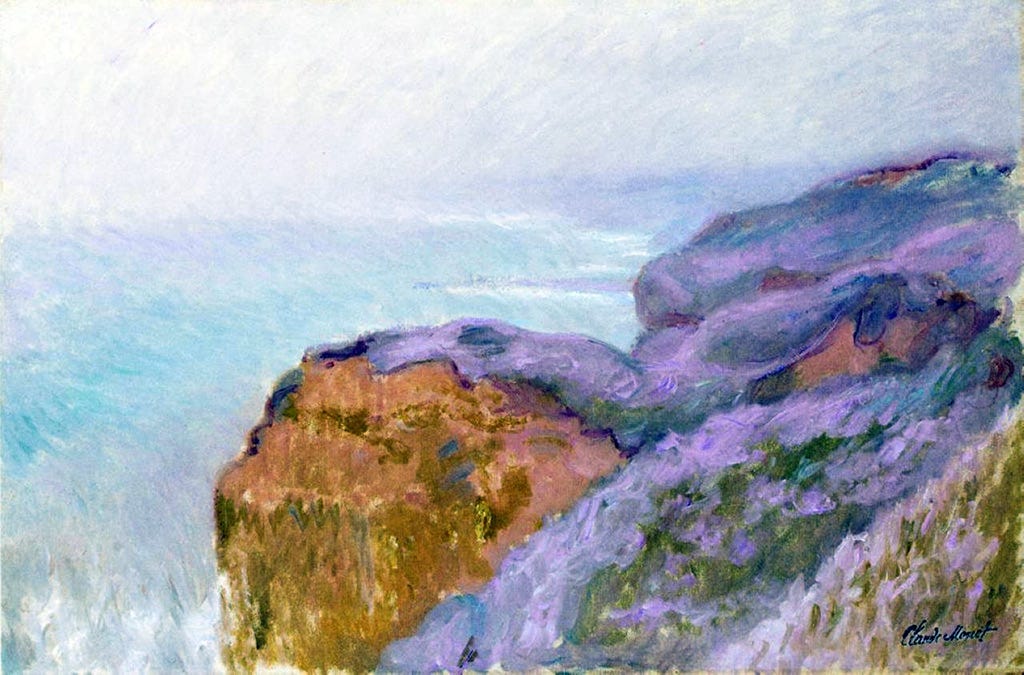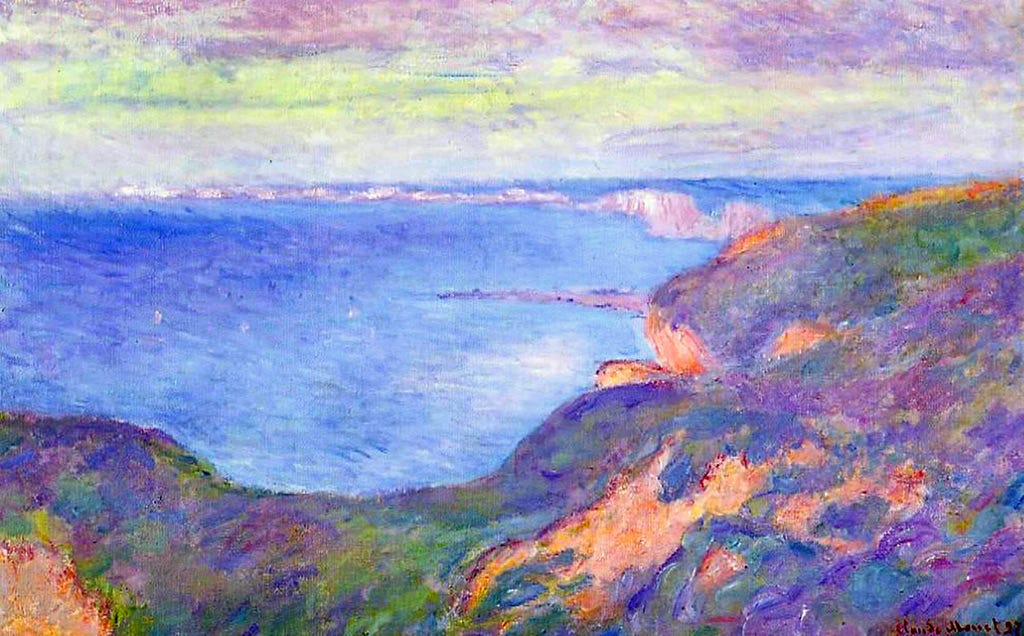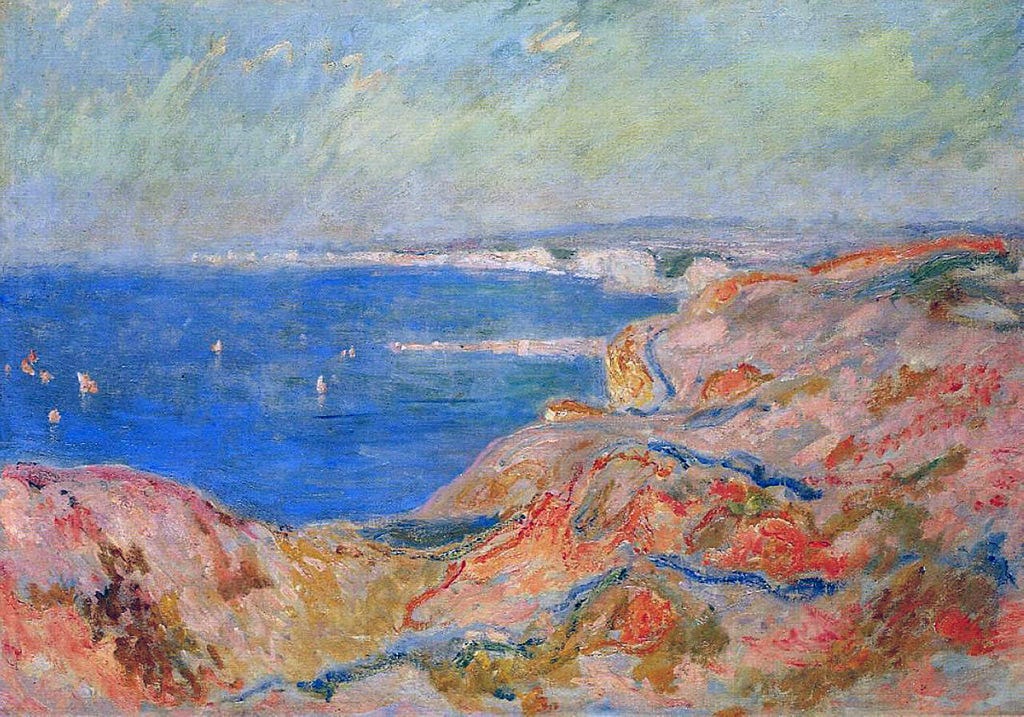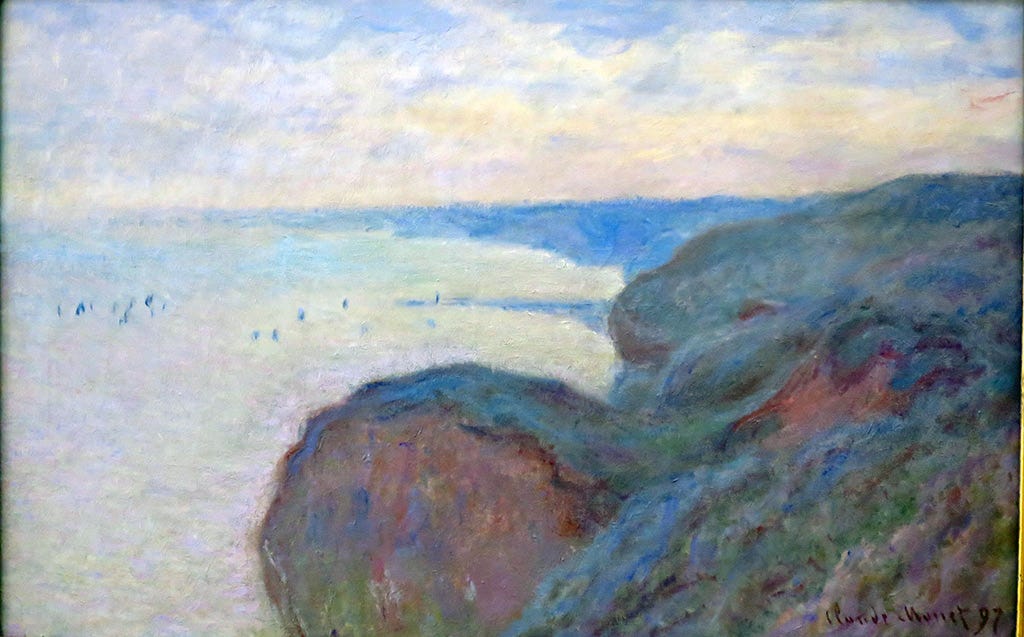NOTE: This is PART 1 (of 3 parts) of Monet’s works in Dieppe. PART 2 deals with the immediate suburb of Dieppe, Pourville-sur-Mer, while PART 3 deals with another suburb, Varengeville-sur-Mer.
Click here to read Part 2a, Monet’s time in Pourville.
Click here to read Part 3a, Monet in Varengeville-sur-Mer.
You can subscribe to our free newsletter to receive updates and new articles in your mailbox.
Claude Monet, born on November 14, 1840, in Paris, France, is celebrated as one of the founding figures of Impressionism, a revolutionary art movement that emerged in the late 19th century. Monet's approach to painting, characterized by loose brushwork, vibrant color, and a deep interest in capturing the effects of light and atmosphere, marked a significant departure from the detailed, carefully finished style of his predecessors. His work not only captures the transient nature of the moment but also conveys the artist's immediate experience of the landscape or scene before him.
Monet's early life was marked by a move to Le Havre in Normandy when he was just five years old. It was here, in the coastal and rural landscapes of Normandy, that he first developed an interest in painting, initially guided by local artists. Despite his family's wishes for him to go into the grocery business, Monet pursued his passion for art, eventually moving to Paris to further his studies. In Paris, he met and was influenced by other young painters, including those who would later form the core of the Impressionist movement, such as Renoir, Sisley, and Bazille.
Monet's time in Dieppe, a picturesque coastal town in Normandy, was part of his broader exploration of the Normandy coast, which also included stays in other areas such as Etretat and Le Havre. Dieppe, with its cliffs, beaches, and the changing light of the sea, offered Monet a wealth of visual inspiration. He visited Dieppe several times during the 1880s, a period during which he was deeply engaged in exploring the effects of light and atmosphere on the landscape.
During his stays in Dieppe, Monet produced a series of paintings that captured the town's unique charm and the transient effects of light on its architecture and surroundings. These works are notable for their innovative use of color and light, aiming to capture the fleeting moments of change in the natural environment. Monet's interest in the effects of light was not just about the visual impact but was also an attempt to evoke the emotional and atmospheric qualities of the scene.
Monet's work in Dieppe and other parts of Normandy during this period exemplifies his approach to plein air painting, where the artist paints outdoors to capture the essence of the landscape directly from nature. This approach was revolutionary at the time and is a hallmark of Impressionist painting. It allowed Monet and his contemporaries to break away from the traditional studio practices and the academic norms that dominated French art at the time.
Throughout his career, Monet's work continued to evolve, leading him to explore series paintings in his later years, where he would paint the same subject under different lighting conditions and at various times of the day. Perhaps the most famous of these series are his paintings of the water lilies in his garden at Giverny, which represent the culmination of his lifelong interest in the effects of light and color.
Monet's legacy is profound, influencing not only the course of Western art but also the way we perceive our natural environment. His work invites viewers to see the world around them through an impressionistic lens, emphasizing the beauty and ephemeral quality of light and color in our everyday lives. Monet died on December 5, 1926, in Giverny, France, leaving behind a body of work that continues to captivate and inspire audiences around the world.
NOTE: This is PART 1 (of 3 parts) of Monet’s works in Dieppe. PART 2 deals with the immediate suburb of Dieppe, Pourville-sur-Mer, while PART 3 deals with another suburb, Varengeville-sur-Mer.
Click here to read Part 2a, Monet’s time in Pourville.
Click here to read Part 3a, Monet in Varengeville-sur-Mer.You can subscribe to our free newsletter to receive updates and new articles in your mailbox.

